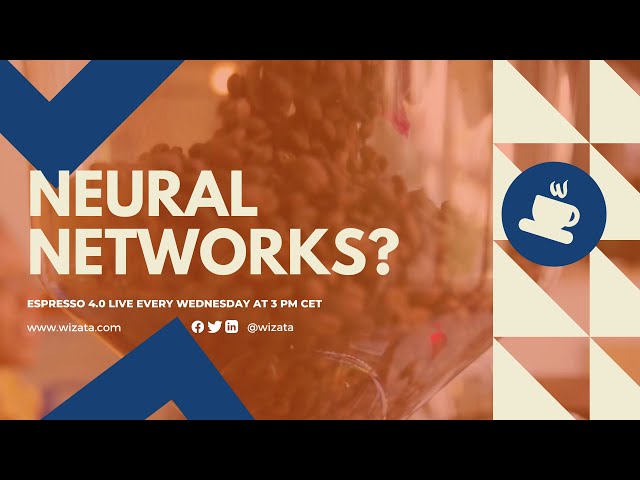![]() Espresso 4.0 by
Espresso 4.0 by
Wizata
Neural Networks are like any other machine learning algorithm. It tries to mimic how the brain works, how the neurons are connected, and how they transfer energy from one to another. It has an architecture, so it works in different layers. The information flows from the input to the output side.
The neural network assigns weights to the information from the previous layers, the previous neighborhoods. This weight is what models the network and makes it adapted to the data we have. This way, it can learn very complex patterns involving many values. This is different from conventional ML techniques.
Are Neural Networks better than conventional machine learning techniques?
The first thing is - they are not better. They have different purposes. Depending on the amount of data you have, the number of variables you have, and how clear the patterns in your data are, it's recommended to use one or another technique.
If you know what's happening, you know that some variable is higher than 200 and some variable is lower than 100, you don't need any ML or AI. If you just want to know when two variables are correlated or this correlation is broken, you don't need ML to do that because it would only bring uncertainty.
It’s when you have much more complex problems that you cannot code directly. These models can capture complex patterns that we cannot see because we are unable to consider 20 variables at the same time, and what happens if that variable number one changes the beat and the variable 17 changes as well.
Going from less to more complex, we start with these rules. Next come computations, like correlations, followed by simple machine learning models like linear regression, polynomials, support vector machines, etc. Finally, at the end of it, we have a deep-learning neural network.
While moving from simpler to complex, you also move from more to less certainty. The more you complicate the process, there is more risk that it might not be reliable.
Why would anyone decide to go for a less predictable or less certain technique?
It's when you have nothing else, when you have lots and lots of variables, we are talking about thousands of variables, that it's when you have to opt for these other techniques. Some techniques don’t require as much pre-processing, but when you have too much data and don’t know where to start, the neural networks will do that job for you.
Ideally, you want to transform the data and extract the variables that expose the patterns you are looking for. Trained neural network models can capture this high-value data.
In short, we are using neural networks in cases where there is a lot of data and variables that we cannot make sense of or humanly process by ourselves while hoping to find insights that we are completely unaware of.
How is this kind of technology used in industry?
There is a particular case of neural networks, which are called autoencoders. They have nothing special regarding neurons and the mathematics inside them, just the architecture is different. They have a bottleneck and fewer layers in the middle. The number of items in each next layer increases to match the number of inputs and outputs.
Autoencoders have many applications, like noise reduction, coloring pictures in grayscale, and they can also be used for dimensional reduction. That's an important one. We would be using them here to detect anomalies and malfunctions.
A neural network tries to reduce dimensions, so it condensates all the information in a small number of variables and reconstructs it again. In a case where you have very common data, it will be fairly easy for the network to reconstruct it. On the other hand, if you have a highly anomalous case about which it could not learn from the training data, the network will not be able to reconstruct the data.
You can later compare how the network has reconstructed the data to what is the real case and explore the mismatches. That's where we get anomalies. They can be anomalies of any kind. But then you can check precisely how each case or from which perspective is difficult to reconstruct.
For example, the reconstruction might go poorly because the system reached a specific temperature or vibration level, and you can link that to a certain failure path. In another case, where the pressure is low, but vibrations are stable, it can be linked to pressure leakage.
Each type of reconstruction can be linked to a business failure pattern, which helps us translate numbers and mathematics to business, to something usable in the real world.



